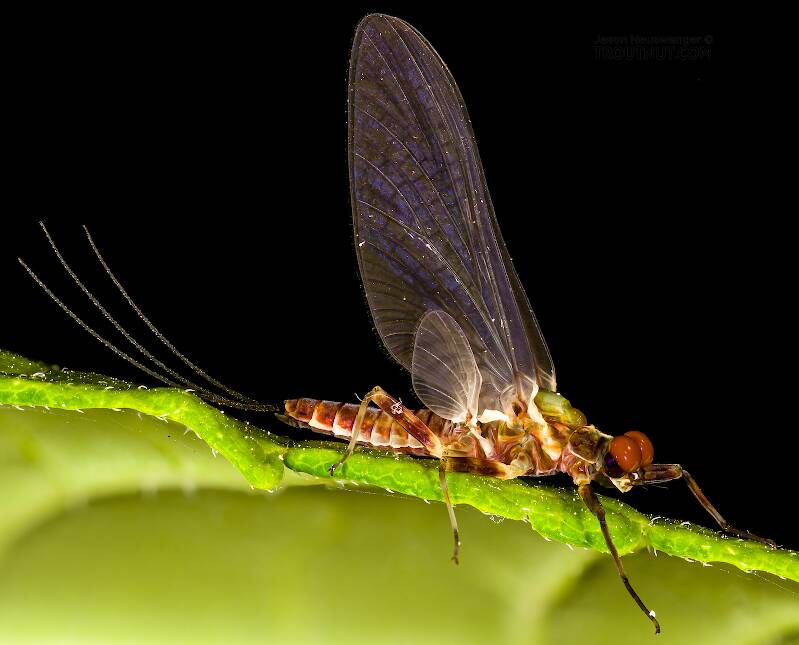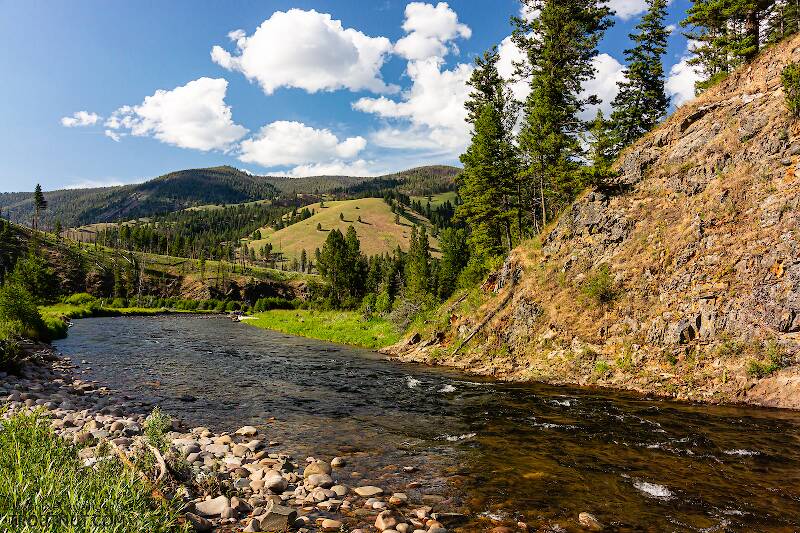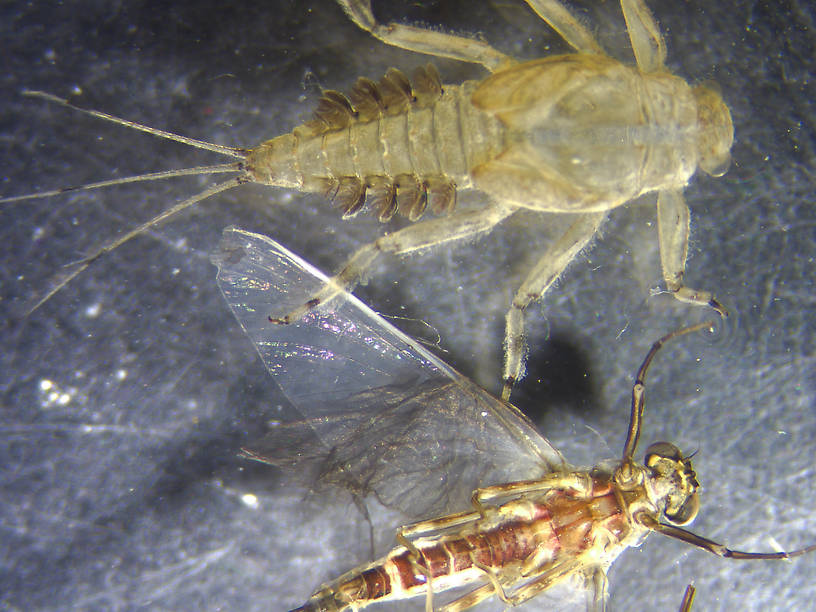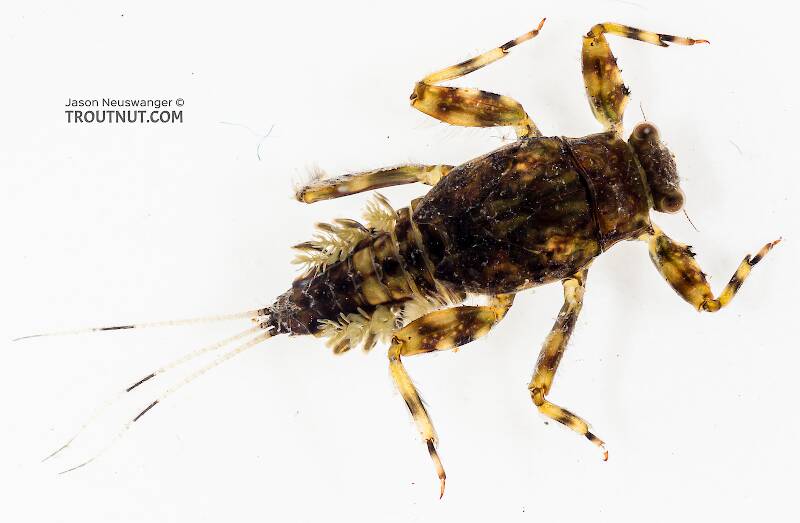
Hex Mayflies
Hexagenia limbata
The famous nocturnal Hex hatch of the Midwest (and a few other lucky locations) stirs to the surface mythically large brown trout that only touch streamers for the rest of the year.
Featured on the forum

Troutnut is a project started in 2003 by salmonid ecologist Jason "Troutnut" Neuswanger to help anglers and
fly tyers unabashedly embrace the entomological side of the sport. Learn more about Troutnut or
support the project for an enhanced experience here.
Dark Slate-Winged Olives
This common name refers to only one species. Click its scientific name to learn more.
Mayfly Species Drunella flavilinea
These are sometimes called Dark Slate-Winged Olives.
The Flavs pick up about a week after the closely related but larger Western Green Drakes (Drunella grandis and Drunella doddsii) finish hatching on most Western waters.
Their hatches may be complemented by simultaneous hatches of two less prolific species, Drunella coloradensis and Drunella spinifera.
Their hatches may be complemented by simultaneous hatches of two less prolific species, Drunella coloradensis and Drunella spinifera.

This dun is smaller than would normally be expected for Drunella flavilinea, but it seems to fit the physical description of that species fairly well. I wasn't sure from the dun pictures alone, so I was hoping it would molt into a spinner. It never made it out of the dun's shuck, but it did begin the process, which allowed me with great care to tease out the last couple abdominal segments of the spinner from the still tightly attached dun shuck, enabling a more confident ID based on the shape of the spinner's penes and sub-genital plate. I also collected a nymph of flavilinea in the same river on the same evening, as well as a shed exuvium that looked large enough to belong to an emerging dun.
The other possibility I considered for a while based on the dun was Drunella pelosa, which would be the right size, but the other characteristics don't fit.
The other possibility I considered for a while based on the dun was Drunella pelosa, which would be the right size, but the other characteristics don't fit.
See 2 more specimens...




